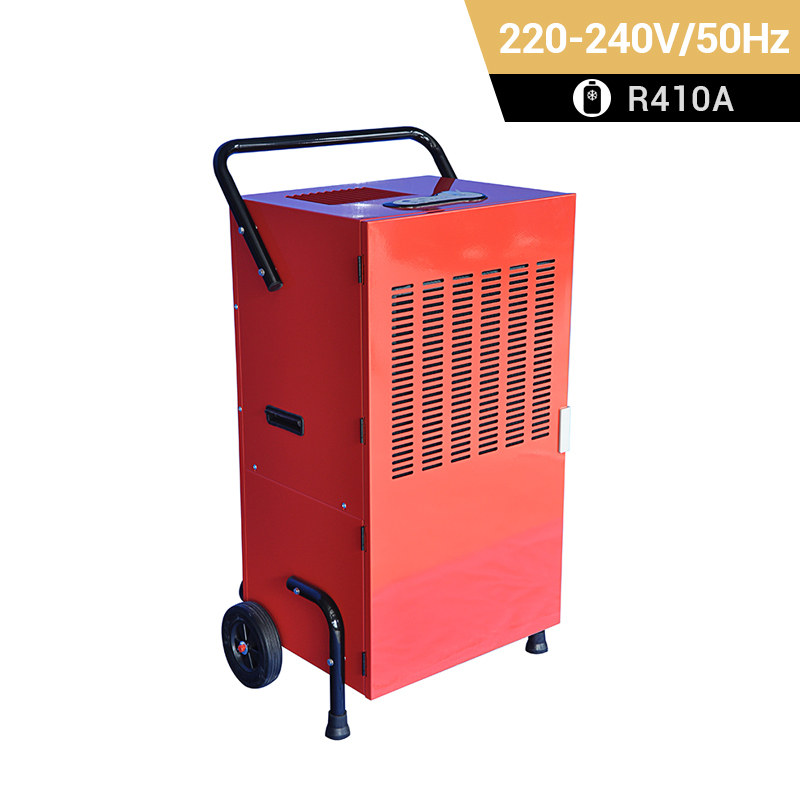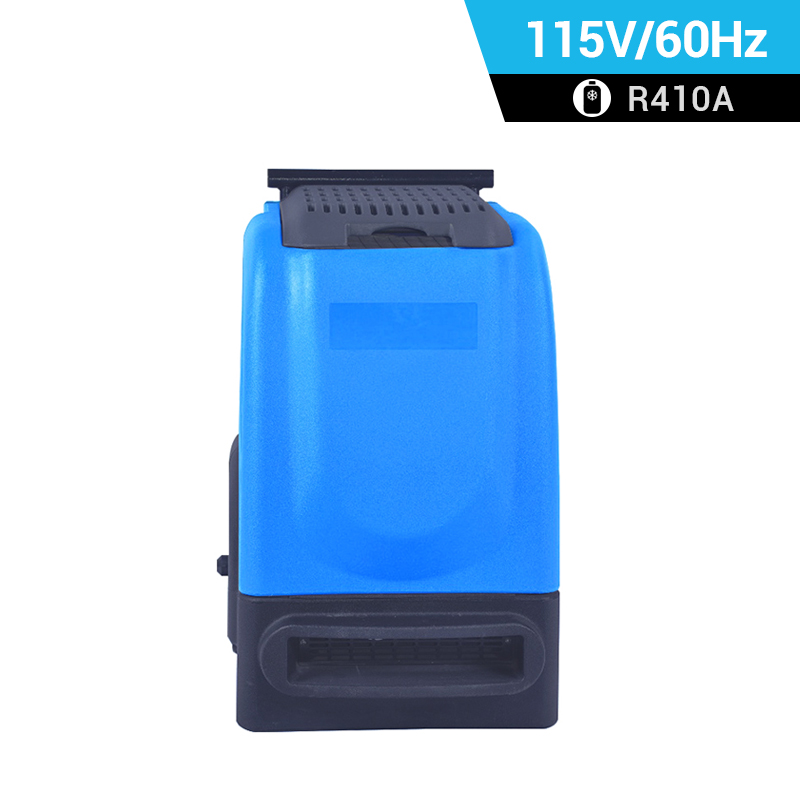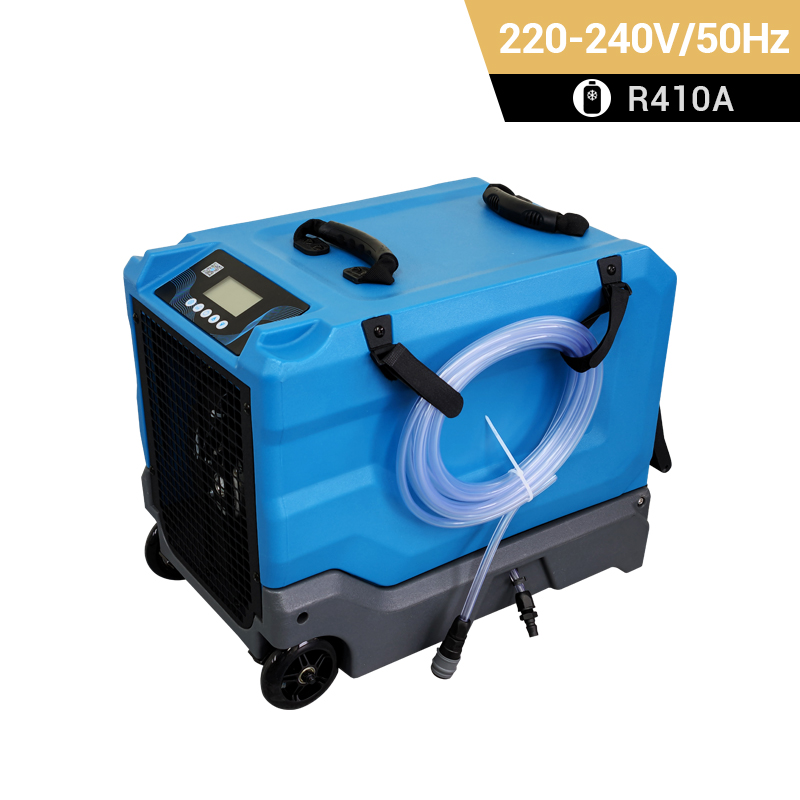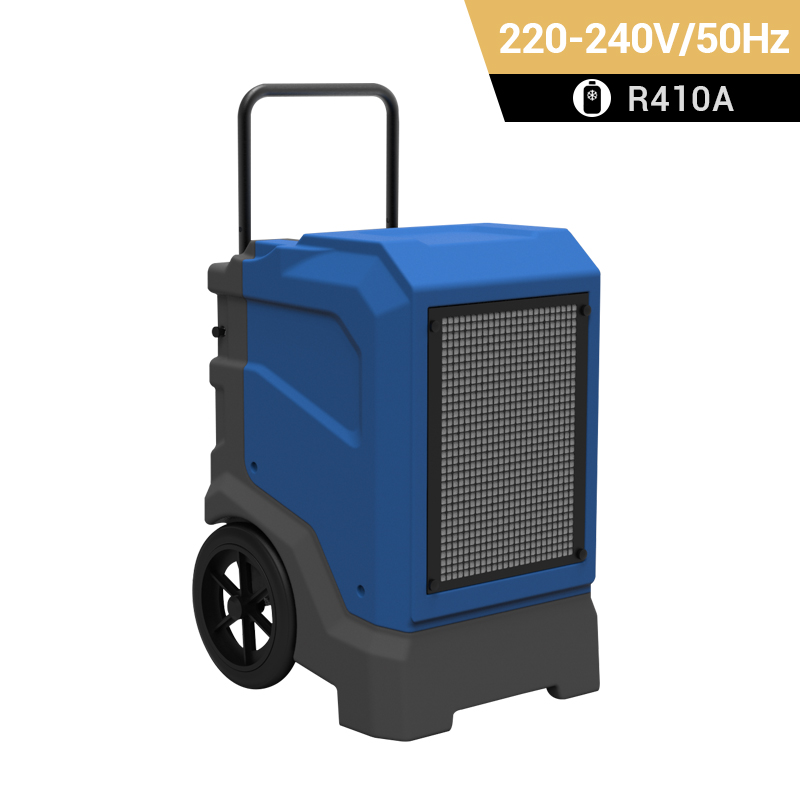What Is the Difference Between Commercial and Residential Dehumidifiers?
Commercial dehumidifiers are typically larger and have higher capacity ratings compared to residential models. They are designed to handle larger spaces and higher humidity loads commonly found in commercial environments like warehouses, factories, and large-scale construction sites. Residential dehumidifiers are smaller and have lower capacity ratings. They are intended for use in homes, apartments, basements, crawl spaces, and other smaller residential spaces.
Commercial dehumidifiers are built for heavy-duty use and are designed to remove large amounts of moisture quickly. They often have more powerful motors and can operate continuously for extended periods. Residential dehumidifiers are designed for typical household environments. They are efficient at maintaining comfortable humidity levels in homes.
Commercial dehumidifiers may be portable but are often larger. They have wheels or handles for easier transport within a commercial space. Residential dehumidifiers are typically designed to be portable and easy to move from room to room. They often have built-in handles or casters for convenience.
Commercial dehumidifiers may have advanced features such as digital controls, multiple fan speeds, humidistats, and remote monitoring capabilities. They also have more robust options for drainage, including direct plumbing connections. Residential dehumidifiers often come with user-friendly controls, including options for setting desired humidity levels.
Commercial dehumidifiers are built with durable materials to withstand the demands of industrial and commercial settings. They are designed to operate in harsh environments and have features like corrosion-resistant coatings. Residential dehumidifiers are designed to meet the needs of home environments and may not have the same level of durability as commercial units.
Commercial dehumidifiers tend to be more expensive due to their higher capacity and advanced features. Residential dehumidifiers are generally more affordable and cater to the needs of homeowners and smaller-scale applications.
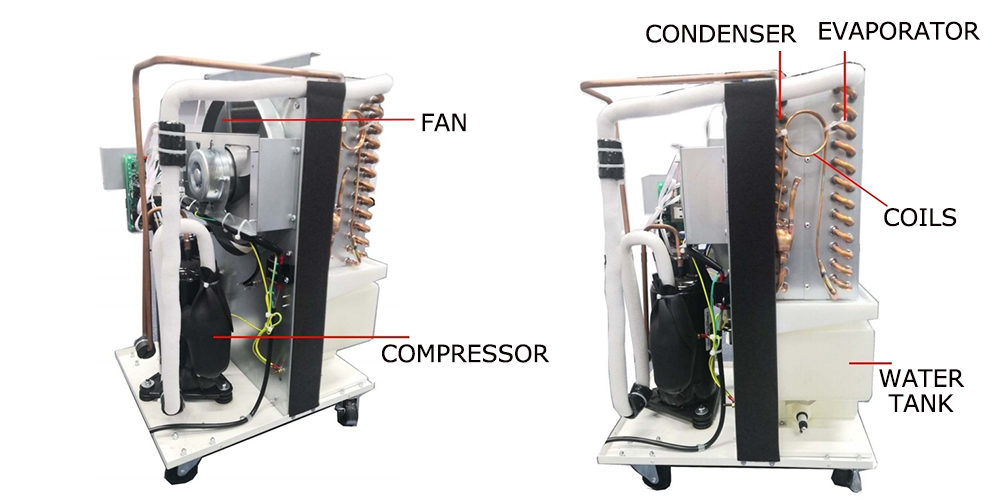
Why Use a Commercial Dehumidifier?
1. Handling High Humidity Loads:
Commercial spaces, such as warehouses, factories, and construction sites, often have high humidity levels due to factors like machinery, production processes, and large open areas. Commercial dehumidifier products are made to handle these damp environment.
2. Preventing Mold and Mildew Growth:
High humidity levels can promote the growth of mold, mildew, and fungi, which can be detrimental to health and damaging to materials. Active air commercial dehumidifiers help maintain a dry environment, reducing the risk of microbial growth.
3. Protecting Equipment and Inventory:
Machinery, electronics, and inventory in commercial settings can be sensitive to moisture. Excess humidity can lead to corrosion, rust, and electrical issues. Using a dehumidifier helps preserve the integrity and functionality of valuable equipment and stock.
4. Facilitating Construction and Renovation:
During construction or renovation projects, it's crucial to control moisture levels to ensure the integrity of building materials. Compact commercial dehumidifiers are often used to help dry out newly constructed or renovated spaces quickly.
5. Aiding in Water Damage Restoration:
In the aftermath of floods or water leaks, commercial dehumidifiers play a vital role in the restoration process. They help remove excess moisture from affected areas, preventing further damage and promoting a faster recovery.
6. Maintaining Comfort for Employees and Customers:
In commercial spaces like offices, retail stores, and restaurants, maintaining a comfortable and dry environment is essential for the well-being of employees and customers. It can also help protect merchandise and equipment.
7. Compliance with Industry Standards and Regulations:
Many industries have specific humidity level requirements for their processes, products, and equipment. Using a heavy duty commercial dehumidifier ensures compliance with these standards and regulations.
8. Reducing Energy Costs:
By using a commercial HVAC dehumidifier, you can help your HVAC system operate more efficiently, potentially reducing energy costs.
9. Minimizing Odors and Improving Air Quality:
Excess moisture can lead to musty odors and poor indoor air quality. Commercial ducted dehumidifiers help reduce these issues, creating a more pleasant and healthier environment.
10. Managing Humidity in Large Spaces:
Commercial dehumidifiers are designed to handle larger volumes of air and are equipped with powerful fans and high-capacity moisture removal systems, making them suitable for spacious environments.
Preair is a highly recommended commercial dehumidifier factory that provides wholesale commercial dehumidifiers. If you want to get dehumidifiers for sale, contact us immediately.
Where Is the Most Effective Place to Put a Commercial Dehumidifier?
1. Central Location
2. Near Moisture Sources
3. Close to Areas Prone to Condensation
4. Adjacent to Problematic Areas
5. Elevated Position
6. Avoid Obstructions
7. Consider Airflow Patterns
8. Accessibility for Maintenance
9. Consider Ducting Options
10. Consult Manufacturer Recommendations
It's important to assess the specific needs and conditions of the environment when determining the best placement for a dehumidifier.
How Long to Run a Dehumidifier After Water Leak?
1. The severity of the water damage will influence how long you should run the dehumidifier. For minor spills or leaks, running the dehumidifier for a day or two might be sufficient. However, for larger-scale flooding incidents, it may need to run for several days or even weeks.
2. Monitor the humidity levels in the affected area using a hygrometer. The goal is to reduce the humidity to a safe and normal range, typically between 30% and 50%. Keep the dehumidifier running until this level is achieved.
3. The size of the room or affected area also plays a role. Larger spaces will likely require the dehumidifier to run for a longer period to effectively remove moisture.
4. Good airflow is essential for the dehumidifier to work effectively. Ensure that windows and doors are closed to prevent additional moisture from entering, but also allow for some airflow within the room to help circulate air.
5. The capacity of the dehumidifier is a crucial factor. Higher-capacity units can remove moisture more quickly, potentially reducing the required runtime.
6. Warmer air holds more moisture, so the temperature in the affected area can impact how quickly the dehumidifier is able to lower humidity levels. In colder environments, it may take longer.
It's better to run the dehumidifier for a bit longer to prevent mold growth and structural damage.
How to Attach an Air Pipe to the LGR Dehumidifier?
Attaching an air pipe to a Low Grain Refrigerant (LGR) dehumidifier is a straightforward process. The purpose of this pipe is typically for directing dry air to a specific area or for ducting the dehumidifier's output.
-
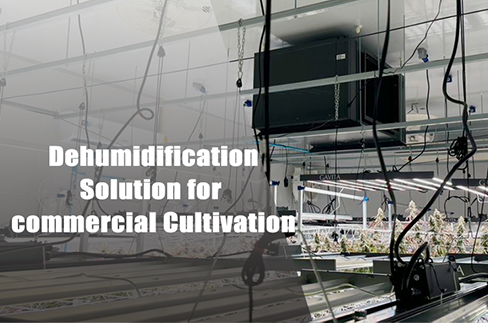
How to Prevent Mold in Grow Room?
Mold is a significant problem for many cannabis cultivators. It can quickly cause problems in how your plants grow, how much yield you get from them, and how much money it costs to keep the mold under control. PREAIR will show you the symptoms of different kinds of molds...
 +86-13376814803
+86-13376814803  robert@hzhongtai.com
robert@hzhongtai.com 

